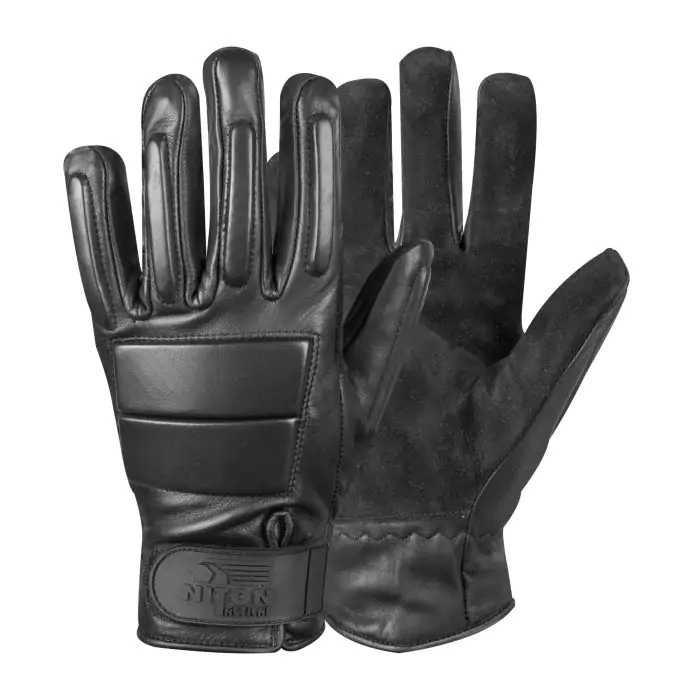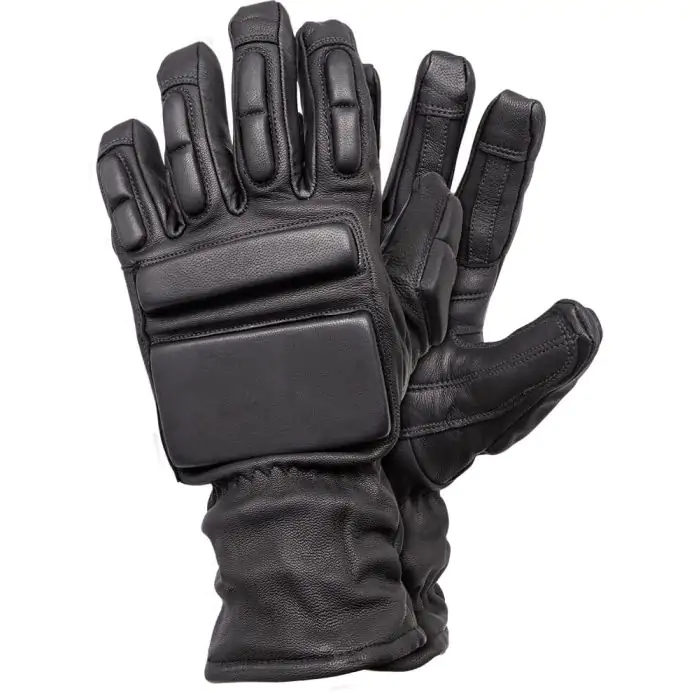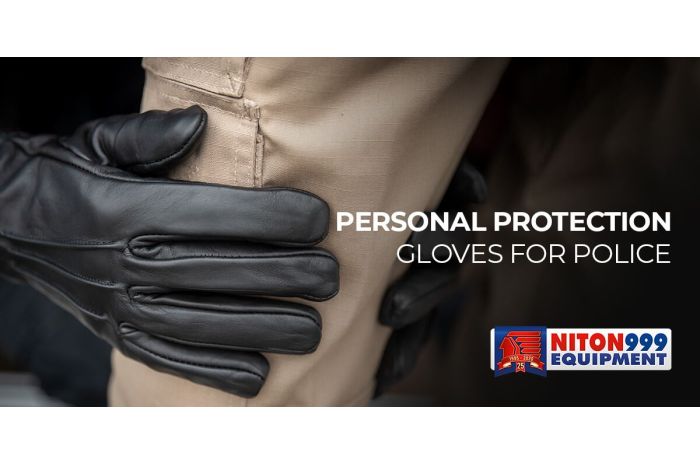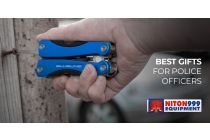When it comes to law enforcement, personal protection is paramount.
Amongst the numerous gear officers use, gloves are unique as they offer protection and the dexterity needed to perform duties effectively.
Let's dive deep into understanding the attributes and specifics of police gloves and the best police gloves for various uses.
Key Features to Look for in Police Gloves
So, what are the most important features to assess when shopping for police gloves?
Dexterity
One of the most important attributes of a good police glove is dexterity.
Dexterity ensures that officers can seamlessly perform tasks, such as handling equipment, using devices, or conducting pat-downs. It’s no good having a stiff glove that can’t be easily moved and manipulated.
Protection
Protection is an essential quality of police gloves. This includes defence against cuts from sharp objects, punctures from needles or shards, and even resistance against blunt force. Advanced gloves might also offer flame or chemical resistance.
Durability
The daily grind of law enforcement can be tough on equipment, and gloves are no exception.
Durability ensures that the gloves don't easily tear, lose their protective properties, or deteriorate with frequent use. Highly durable gloves also offer long-term savings as they don't need frequent replacement.
Weather Resistance
Officers often work outdoors, and their gloves need to withstand various weather conditions.
Insulation is crucial for colder climates or seasons to keep the hands warm while maintaining glove performance.
Grip
A robust and reliable grip is indispensable for police gloves. A secure grip ensures safety and boosts confidence in performing tasks efficiently. Gloves with textured palms, fingers, or specific grip-enhancing materials are highly beneficial.
Gloves for Specific Police Needs
There’s more than one type of police glove. Here are the core types.
Pat-down or Frisk Gloves
When officers conduct body searches, they need gloves that allow them to feel even the smallest objects while ensuring their safety. Pat-down or frisk gloves are designed with tactile sensitivity.
These gloves, made from thin yet protective materials, allow officers to detect concealed items like weapons or drugs during frisks. They should also resist potential punctures or cuts from hidden sharp objects.
Tactical Police Gloves
Tactical gloves are versatile and designed for a range of operations. These comprehensive gloves combine multiple features, including dexterity, protection and grip.

Above: Niton Raid 2 Gloves
Often used in high-risk situations, tactical gloves should offer robust protection against cuts, abrasions, and burns. Many come with reinforced knuckles or palms to provide additional safeguarding during intense physical engagements or when handling rough surfaces.
Public Disorder or Riot Control Gloves
Officers who face crowds or violent protests require gloves that offer superior protection against physical harm. Riot control or public disorder gloves are sturdy and often thicker than standard police gloves.

Above: Cut-proof public disorder gloves
They often feature reinforced padding on the knuckles, back of the hand, and fingers to protect against blows. Some might even include flame-resistant properties, given the potential risks during riots.
Cold Weather Gloves
Officers working in chilly environments need gloves to keep their hands warm without compromising functionality.
Cold weather gloves are insulated to trap heat, ensuring the hands remain warm even in freezing conditions. Many come with water-resistant or waterproof properties to effectively tackle wet conditions,
Materials Used in Police Gloves
There are several types of materials used in police gloves:
Leather
A classic choice in glove construction, leather is favoured for its blend of durability, style, and tactile sensation.
It naturally conforms to the hand’s shape over time, ensuring a snug fit essential for police work. When treated, leather can also be water-resistant, making it suitable for a range of conditions.
Kevlar
A synthetic fibre known for its high tensile strength, Kevlar is widely recognised for its exceptional resistance to cuts and heat. The best Kevlar gloves police offer superb strength and protection.
When woven into gloves, Kevlar provides a robust protective layer, protecting officers from potential injuries, especially during tasks like handling sharp objects or dealing with fire hazards.
Latex/Nitrile
These are disposable materials primarily used in gloves designed for evidence collection. Both latex and nitrile offer a barrier that prevents the transfer of contaminants, ensuring the integrity of evidence.
While latex has been a long-time favourite, nitrile has become increasingly popular due to its resistance to punctures and its hypoallergenic properties, reducing the risk of allergic reactions.
Synthetic Materials
Modern glove designs often incorporate synthetic materials as primary construction or combined with natural materials.
These synthetics enhance the glove's flexibility, ensuring officers can move their fingers freely and maintain dexterity. They can also offer benefits like improved breathability or increased grip.
Proper Fit and Care of Police Gloves
Fit
The right fit is crucial for police gloves. A glove that's too tight can restrict movement and cause hand fatigue, while a glove that's too loose can impair dexterity and compromise safety.
Officers should ensure the glove fits snugly but comfortably, allowing for full range of motion.
Maintenance
Like all gear, gloves need regular maintenance to stay in optimal condition. Officers should periodically inspect their gloves for signs of wear and tear, like thinning material or broken stitching.
Depending on the material, gloves should be cleaned according to the manufacturer’s guidelines, which might involve hand washing or using specific cleaning agents.
Replacement
Even the best gloves have a lifespan. While they are designed for durability, they might show signs of wear or lose some of their protective qualities over time.
When gloves begin to deteriorate, officers need to replace them promptly. This ensures they always have the maximum protection and functionality their tasks demand.
Summary
Police gloves are an essential piece of kit you won’t want to be without.
While there are many types of all-purpose tactical gloves, like the Niton 999 Raid Two tactical gloves and Tactical Search Gloves, Niton 999 also offers specialised models like the Hatch Kevlar Gloves and Hatch Winter Patrol Gloves.
Browse our gloves in-store today.
FAQs
Why do police wear gloves?
Gloves act as a protective barrier for law enforcement officers. They shield the hands from potential injuries and contaminants and ensure that officers can maintain optimal dexterity during various operations.
Police puncture-resistant gloves are ideal for staying protected from sharps during searches.
Why do police wear leather gloves?
Leather is preferred for many police gloves because it strikes a balance between offering solid protection and allowing for sufficient dexterity.
Moreover, leather gloves are durable and can withstand the wear and tear of daily police work.
What kind of gloves do police officers wear?
The type of glove a police officer chooses depends on the specific task at hand. Choices range from frisk gloves for body searches, riot control gloves for crowd management, tactical gloves for heavy-duty use and insulated cold-weather gloves for operations in chilly conditions.
What are the best gloves for police search?
For police searches, gloves that prioritise tactile sensitivity are crucial. Thin material gloves that don't compromise protection, often combined with features like puncture resistance, are ideal. This ensures officers can feel concealed items while still protecting their hands.
What are the best cut-proof police gloves?
Gloves incorporating Kevlar or similar resistant materials are considered top-tier for cut protection. Their design ensures officers' hands are safeguarded from potential cuts or slashes during operations.
Why do police use latex gloves?
Latex gloves serve a dual purpose for police officers. They prevent contamination of evidence during investigative tasks, ensuring its integrity.
Additionally, they act as a barrier, protecting officers' hands during body and crime scene searches from potential biohazards.
What is the most puncture-resistant glove?
Gloves reinforced with Kevlar or certain advanced synthetic materials are renowned for their high puncture resistance.
These gloves are engineered to offer protection against sharp objects, ensuring officers' safety during pat-downs and other tasks where punctures might be a concern.






